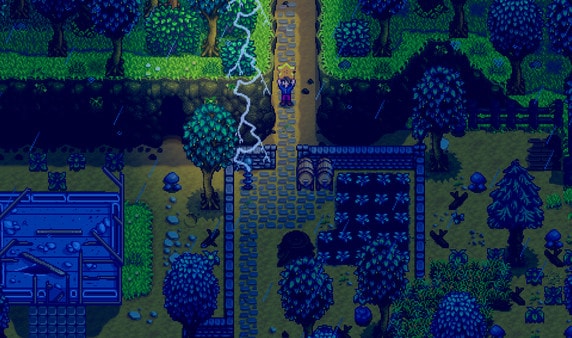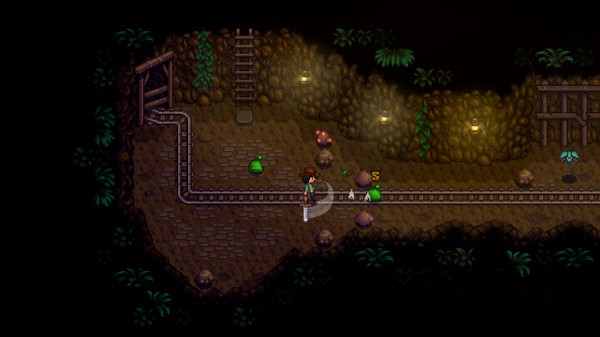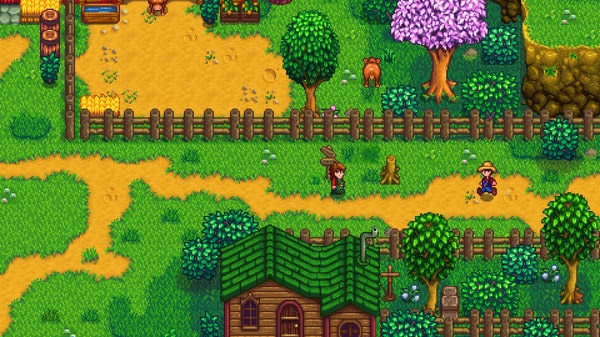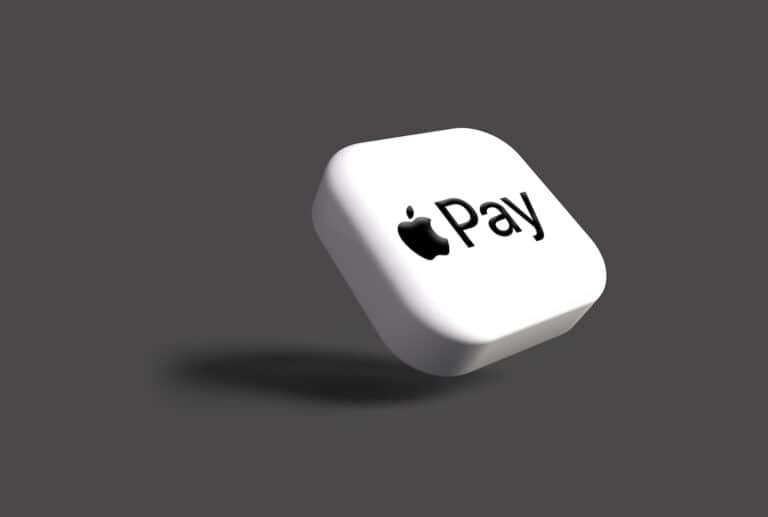Stardew Valley offers a few ways to “bend the rules” depending on how much you want to alter the standard gameplay experience:
Types of Stardew Valley Cheats
- Item ID Naming Trick:
- When creating your character, use specific item codes within brackets as your name (e.g., [645][166]).
- When NPCs say your name in dialogue, you’ll receive the corresponding item. This is a bit tedious for repeated use, though.
- In-Game Console Commands (PC Only):
- Stardew Valley has a limited set of built-in console commands. You’ll need to edit a game file to enable them. Commands include things like:
- money [amount] : Adds gold
- debug fps: Shows frames per second
- Stardew Valley has a limited set of built-in console commands. You’ll need to edit a game file to enable them. Commands include things like:
- Mods for Extensive Cheating:
- Mods are the most powerful way to cheat in Stardew Valley. These require installing SMAPI (a mod loader) and then choosing specific cheat mods. Popular options are:
- CJB Cheats Menu: Offers a huge array of in-game menu options like warping, instant crop growth, relationship changes, and more.
- CJB Item Spawner: Lets you search for and add any item to your inventory.
- Mods are the most powerful way to cheat in Stardew Valley. These require installing SMAPI (a mod loader) and then choosing specific cheat mods. Popular options are:
Cheat Codes and Item Spawning
Stardew Valley players can use cheat codes to make the game more interesting. Item spawning allows players to obtain items instantly, rather than finding or crafting them. To spawn items, players can exploit a feature by naming their character or farm animals with item codes within square brackets.
For example, if a player names their character [74], they will receive an Ancient Seed every time an NPC says their name. This method also works for spawning a Prismatic Shard with the code [74], a Stardrop with [434], or a Galaxy Sword with [96]. It is possible to stack up to three codes for different items.
Here is a list of some popular item codes:
- Ancient Seed:
[498] - Prismatic Shard:
[74] - Stardrop:
[434] - Galaxy Sword:
[4] - Chicken Statue:
[100] - Dinosaur Egg:
[107] - Ancient Drum:
[96] - Dwarf Gadget:
[60] - Ancient Sword:
[370] - Rare Disc:
[74] - Prehistoric Tool:
[579] - Frozen Tear:
[380] - Earth Crystal:
[86] - Secret Note:
[79]

Players should be cautious, as using cheats can affect the game experience. Item spawning works by placing the code of the desired item in the name of a character or animal, and the item appears in the player’s inventory when the name is mentioned in the game.
Note that this exploit might not work in all versions of the game and could potentially be patched out in future updates, so it’s wise to check the current status of the game before attempting these tricks.
Fishing and Foraging Tips
Stardew Valley offers a rich variety of activities, and among them, fishing and foraging are not only fun but also profitable. Understanding the intricacies of these tasks can substantially boost your efficiency.
Fishing Techniques and Secrets
Fishing in Stardew Valley can be both a source of income and a way to collect items through treasure chests. Here are some tips to improve your fishing game:
- Time: Different fish appear at different times of day and during different weather conditions. For example, the elusive Catfish comes out when it rains, and Walleye can be found in the fall during rainy evenings.
- Bait and Tackle: Using bait on your fishing rod will speed up the time it takes for fish to bite. Tackle can help by adding benefits like the barbed hook, which makes fish bite more readily.

To help you target specific fish, here’s a quick list of when to catch some popular species:
- Eel and Bream: Best caught at night.
- Largemouth Bass and Rainbow Trout: Found during the daytime.
- Squid and Tuna: These are seasonal catches with Squid in the Winter and Tuna in the Summer.
Maximize your efforts by visiting prime fishing spots and learning fish patterns. Some fish like the Pufferfish and the Angler are rare and can be sold for a considerable amount of gold or used in certain quests.

Foraging and Gathering
Foraging rewards players with valuable resources through gathering wild plants and items across Stardew Valley. Some tips include:
- Seasonal Foraging: Plants like Wild Horseradish and Daffodil can be found in Spring. Dandelion are available to gather as well.
- Special Spots: The Secret Woods and railroad area provide unique forageable items.
- Spring Onions: Look for these near the sewers in the spring for an extra boost to your early-game economy and energy levels.
Remember, foraging is not just about picking what you can find. If you’re strategic about it, foraging can help you complete community center bundles and offer ingredients for crafting, like Field Snacks, which provide a great source of energy.
Farming and Livestock Management
Stardew Valley’s charm includes the art of growing crops and raising animals. Advanced players often look for ways to manage resources efficiently. For instance, parsnip seeds are the player’s first introduction to farming. Parsnip, a quick-yielding crop, is perfect for generating income early in the game. As the season progresses, upgrading to a bean starter can be a wise move since it provides multiple harvests.
To make the most of livestock, regular milking is crucial. From cows, player obtain milk, which can be sold as is or turned into cheese (after constructing a cheese press) for greater profit. Managing livestock also means ensuring they’re happy and healthy, as this increases production quality.
Essential Farming Supplies:
- Seeds: Parsnip seeds, bean starter
- Tools: Watering can, hoe
Livestock Essentials:
- Animals: Cows (for milk)
- Maintenance: Regular feeding, petting
For resource gathering, players should pay attention to items like acorn, quartz, and fire quartz. While acorns can grow into Oak trees for lumber collection, you can also extract resin from them by constructing a tapper. Oak trees from the acorns are needed for oak resin. Additionally, maple syrup can be extracted from maple trees and pine tar from pine trees if you construct tappers and place them on the trees.
Resource Collection Table:
| Item | Use |
|---|---|
| Acorn | Planting trees for lumber |
| Milk | Sell directly or craft into cheese (with a cheese press) |
| Quartz | Crafting, selling |
| Fire Quartz | Higher value crafting, selling |
Gathering is not just about crops and minerals; it’s also about maintaining your farm’s surroundings. Regular disposal of weeds, careful use of sap to make fertilizer, and crafting torches from sap and wood keeps the farm efficient, and ensures that night-time operations are safe and productive.
Bearing in mind these points can turn a simple patch of land into a flourishing farm and contribute significantly to your Stardew Valley success.

Frequently Asked Questions
Cheating in Stardew Valley opens up a world of possibilities, but how you go about it varies by platform. Whether it’s item spawning or instant crop growth, the methods change between PC, consoles, and mobile devices. Let’s explore the common questions players have about using cheats across the different platforms.
How can I enable cheats on Stardew Valley for PC?
On the PC version of Stardew Valley, cheats are often enabled through the use of mods. One common tool is SMAPI, the Stardew Modding API. After installing SMAPI, players can download and use various cheat mods that can alter the game to their liking.
What are the steps to use cheat codes on Stardew Valley for Xbox One?
For Xbox One, cheat codes are not natively supported in Stardew Valley. Players typically rely on exploiting game glitches which can be found through community forums or videos. Since these glitches can be fixed in updates, it’s important to check for the most recent methods.
Are there any specific methods to apply cheats on Stardew Valley for PS4 and PS5?
Similar to Xbox One, Stardew Valley players on PS4 and PS5 generally make use of unintentional glitches to gain advantages. These can include duplication glitches or methods to earn quick money. Keeping an eye on the latest player-shared tips is essential as these glitches often get patched.

Can mods be used to cheat in Stardew Valley, and how does one install them?
Yes, mods can be employed for cheating in Stardew Valley. Players need to install SMAPI first, which serves as a mod loader. Afterward, players can add cheat mods to their game by placing the mod files into the ‘Mods’ directory in their Stardew Valley installation folder.
What is the process for activating cheats on Stardew Valley on the Nintendo Switch?
The Nintendo Switch version does not support traditional modding or cheat codes. Players typically look for system-specific exploits or workarounds. Since these are subject to change with software updates, diligent research is necessary to find current cheats.
How do I use cheats in Stardew Valley on mobile devices such as Android and iOS?
On mobile platforms like Android and iOS, cheating in Stardew Valley is quite restrictive. If at all possible, it typically involves using third-party apps or tools, which might not be officially supported or could violate terms of service. It’s advised to proceed with caution and be aware of each platform’s guidelines.







